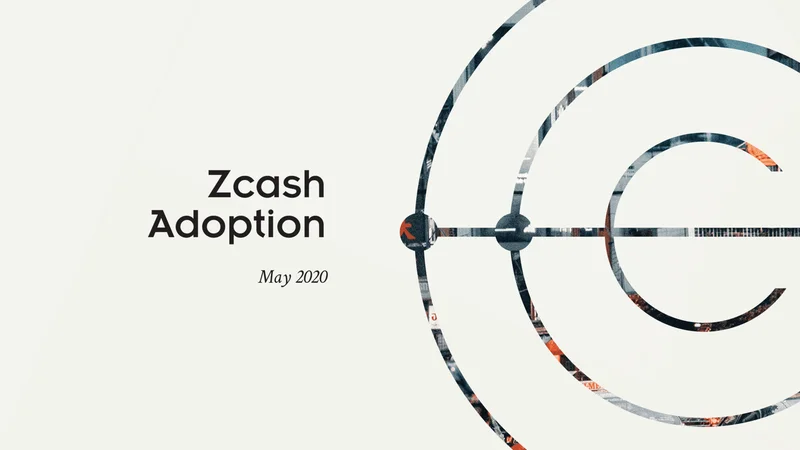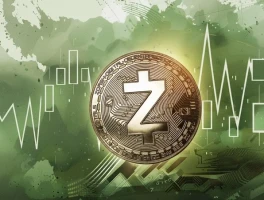Zcash's Quiet Roadmap vs. Its Deafening Rally: A Data Disconnect
The numbers tell a frantic story. Since mid-September, the price of Zcash (ZEC) has executed a near-vertical climb, surging from a quiet $50 to a roaring $420. That's an ascent of over 700%—or to be more precise, 740% as of November 1st. This isn't just a token catching a bid; it's a full-blown market re-rating. Capitalization has swollen past its primary competitor, Monero, and on-chain metrics show a genuine spike in usage. The supply of shielded tokens within Zcash's most advanced privacy protocol, Orchard, has ballooned to over 4.1 million, with the vast majority of that growth occurring in the last six weeks.
On the surface, this is the picture of a project hitting a critical inflection point. The market, it seems, has woken up.
But when you juxtapose the deafening roar of the market with the quiet, almost mundane, language of Electric Coin Co.'s newly released Q4 2025 roadmap, a significant discrepancy emerges. The rally screams revolution, but the roadmap whispers… maintenance. The central question for any clear-eyed observer is stark: Are traders seeing a future that the developers aren’t even talking about yet, or is this a classic case of a market narrative completely decoupling from fundamental reality?
The Anatomy of a Rally
Before dissecting the roadmap, it’s essential to understand the catalysts that primed the pump. The recent price action didn’t happen in a vacuum. ECC has made two strategically significant moves with its Zashi wallet. On August 28, it integrated a decentralized off-ramp for shielded ZEC, and on October 1, it followed with a decentralized on-ramp. These aren't minor tweaks; they are foundational pieces of infrastructure that solve a long-standing usability problem for privacy protocols: getting in and out of the shielded ecosystem without touching a centralized, KYC-heavy exchange.
This is where the on-chain data becomes so compelling. The surge in the Orchard shielded supply isn't just bots wash-trading; it's a direct, measurable response to a tangible product improvement. Imagine a beautifully engineered submarine that, for years, could only be boarded at a single, highly-surveilled military dock. Suddenly, the engineers install a network of private, accessible hatches all over the world. You’d expect a lot more people to start using the submarine. That’s what we’re seeing here.
I’ve looked at hundreds of these on-chain growth charts, and this particular pattern is unusual. It’s not a gradual, organic increase; it’s a step-function change, a direct reaction to a specific event. The market is correctly identifying that Zcash has crossed a crucial usability threshold. Adding to this narrative is ECC's decision to temporarily disable the Coinbase on-ramp after the update, citing a new session-token requirement it deemed a privacy risk. This move, while seemingly minor, sends a powerful signal: the project prioritizes its core principles over convenient, centralized access. For the privacy-conscious investor, that’s a feature, not a bug.
So, is this 740% rally simply the market pricing in the profound implications of a truly private, circular crypto economy? Is this the reward for years of methodical, academic-led development finally bearing fruit?

Deconstructing the Blueprint
This is where the narrative begins to fray. After a market move of this magnitude, one would expect the corresponding roadmap to be filled with audacious, game-changing goals. You’d look for protocol-level innovations, major ecosystem partnerships, or a vision for mass-market expansion. Instead, the ECC Q4 2025 roadmap, as detailed in Zcash creator ECC unveils Q4 2025 roadmap as privacy token's price and shielded supply surge, reads like an engineer’s to-do list for tidying up the workshop.
The stated focus is on "reducing technical debt, improving privacy and usability for Zashi users, and ensuring smooth dev fund management." Let’s break that down. Key priorities include adding temporary addresses for swaps, generating new transparent addresses to minimize reuse, and improving support for the Keystone hardware wallet (specifically, P2SH multisig and resyncing capabilities). The multisig feature will also be used to secure the Zcash developer funds.
These are all sensible, necessary, and responsible tasks. They are the digital equivalent of reinforcing a building’s foundation or upgrading its electrical wiring. Improving address hygiene is a clear win for user privacy. Bolstering hardware wallet support is critical for security. Securing the dev fund with a P2SH multisig wallet is just good operational practice. But none of these items are catalysts for exponential growth. This isn't a blueprint for building a skyscraper; it's a set of instructions for passing a building inspection.
The entire plan is an exercise in incrementalism. It’s like a car company, fresh off an 8x stock surge, announcing its next revolutionary step is to improve the windshield wipers and add a new cup holder. You’re left staring at the announcement, then back at the stock chart, trying to figure out what you’ve missed. Where is the plan to scale to millions of users? What about layer-2 integrations or cross-chain privacy bridges that could unlock new oceans of liquidity? The roadmap is silent on these points.
This creates a palpable tension. The market is pricing Zcash as if it’s about to win the race, but the pit crew is focused on polishing the hubcaps. And this is the part of the data that I find genuinely puzzling. There’s a profound mismatch in energy. You can almost feel the frantic, flashing numbers on trading terminals set against the quiet, methodical keystrokes of developers working through a backlog of tickets. The market is demanding a paradigm shift, and ECC has responded with a plan for paying down its technical debt (a term for the implied cost of rework caused by choosing an easy solution now instead of using a better approach that would take longer). Is this a sign of a disciplined team ignoring the hype, or a team that’s out of sync with its own market momentum?
A Classic Case of Narrative-Market Divergence
My analysis suggests the recent Zcash rally is an event driven almost entirely by narrative, not by the project's stated near-term future. The market has seized upon the very real and very important usability improvements of the new on/off-ramps and has extrapolated a future of mass adoption. The price is no longer tethered to the reality of the Q4 2025 roadmap; it’s tethered to a powerful idea of what Zcash could become.
There is nothing inherently wrong with this. Markets are forward-looking mechanisms. But the divergence between the speculative fervor and the operational plan represents a significant risk. The roadmap is not ambitious. It is a mature, conservative plan for a project focused on stability and security. The price action, however, is that of a high-risk venture that just made a world-altering breakthrough.
Investors are betting that the quiet work of paving the driveway will eventually lead to an interstellar highway. They might be right. But the document ECC has provided only details the paving. The danger is that speculative momentum requires a constant feed of new, exciting catalysts. A roadmap focused on bug fixes and wallet maintenance is unlikely to provide that fuel. This is a fragile rally, built on a powerful vision but supported by a conspicuously modest blueprint.




